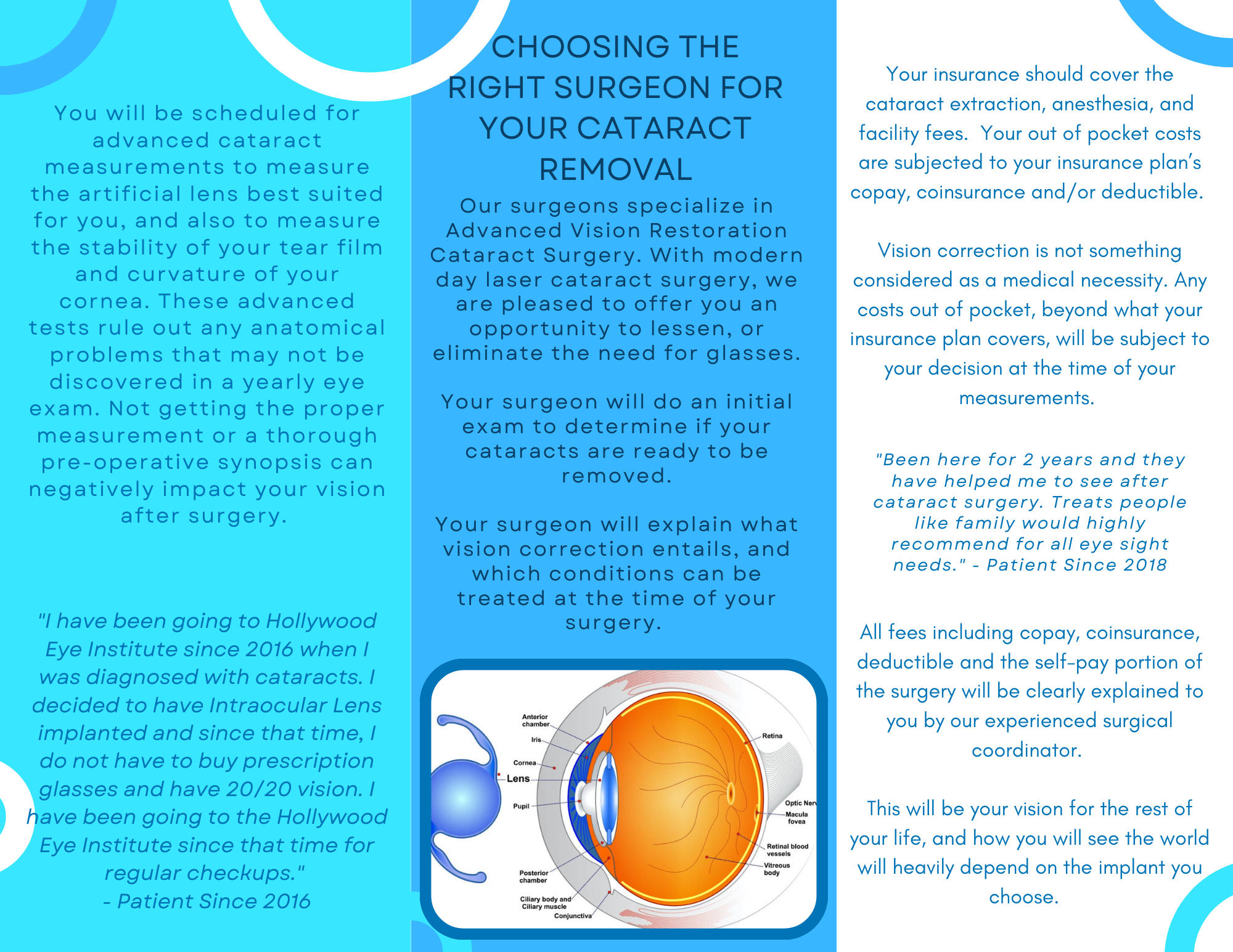What causes cataracts?
Cataracts are formed when some of the protein that makes up the lens clump together and clouds the lens. The clouding of the lens in the eye can significantly affect the vision. In order for our eyes to see, light rays travel into our eye through the pupil where the light rays are focused and travel, again, through the lens to the retina. Just like camera lenses, if the lens isn’t clean and clear, light cannot properly focus onto the retina. If the lens has become cloudy, it is the result of a cataract.
Seeing through a cataract is similar to looking through a foggy window. An individual who is affected by cataracts can have difficulty reading and driving. Cataracts develop over time and do not disturb your eyesight immediately. However, with time, it can and will interfere with your vision. A cataract can occur in either or both eyes.
Who is at risk?
Individuals who are at risk for cataracts are those with certain diseases (such as diabetes), individuals with lifestyles that include activities such as smoking, alcohol use and an increased amount of time spent in the sun. However, most cataracts are related to aging and is therefore very common in older people; cataracts affect over 20 million Americans over the age of 40.

Treatment options
Cataracts are not preventable, but they are treatable. Treatment is not necessary early in the disease process. Symptoms of early cataracts can be improved with brighter lighting, anti-glare sunglasses and magnifying glasses. However, if impaired vision interferes with everyday activities, treatment may be needed.
Treatment for cataracts is cataract surgery. The surgery is a safe and effective procedure resulting in an improvement in vision. The procedure involves removing the cloudy lens and replacing it with an artificial lens. The procedure is often performed using a sophisticated laser. At the Hollywood Eye Institute, we are fortunate to have a wide range of intraocular lens implants some of which can correct astigmatism and even reading vision. All lenses will differ depending on the severity of the patient’s cataract. The surgery is usually performed as an outpatient procedure under local anesthesia. Just like any other surgery, cataract surgery has risks and complications; fortunately, complications are very rare. Recovery is brief and most patients will be asked to limit their activities for only a few days.
Cataract surgery is only recommended if the vision loss has begun to affect your quality of life. The procedure may be done to improve your vision or help you return to work or other activities. If you would like to learn more about cataracts, make an appointment to speak to Dr. Shareen Greenbaum.

Source: National Eye Institute & AAO
